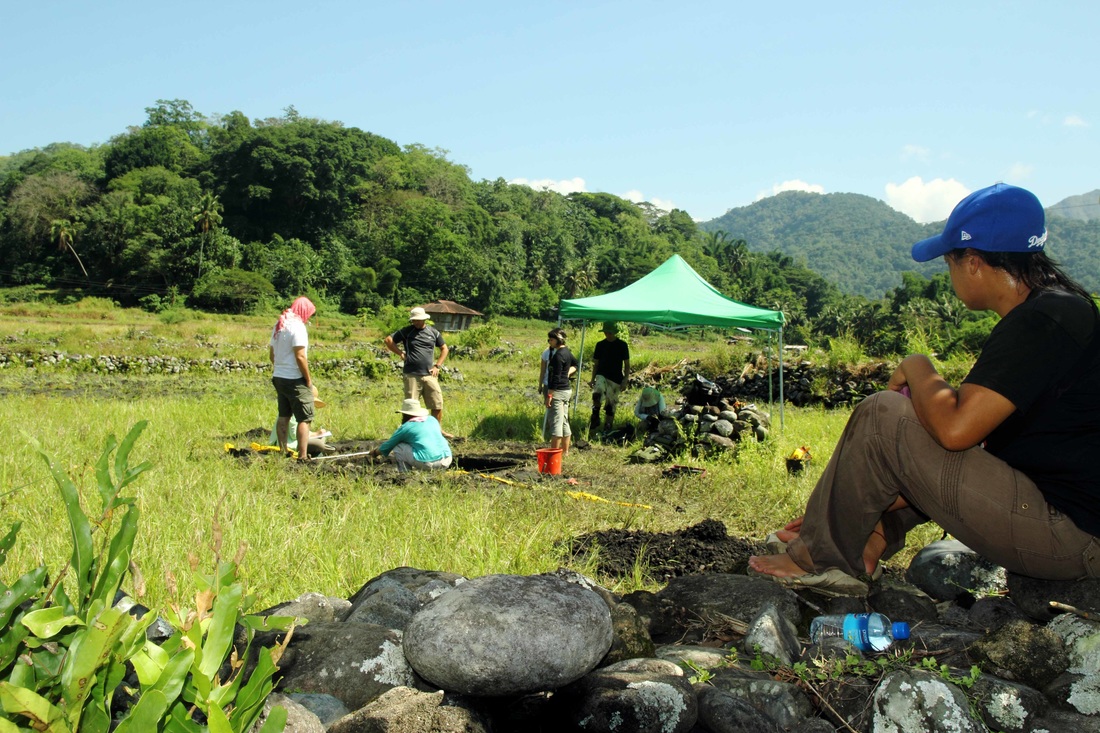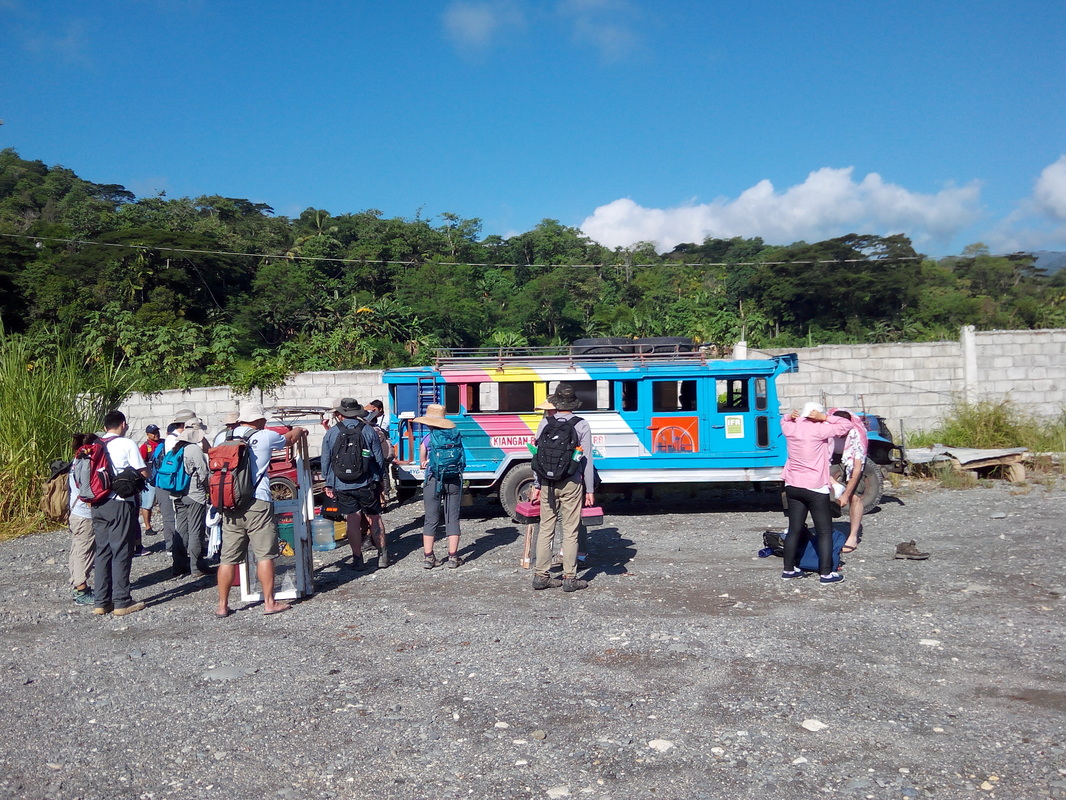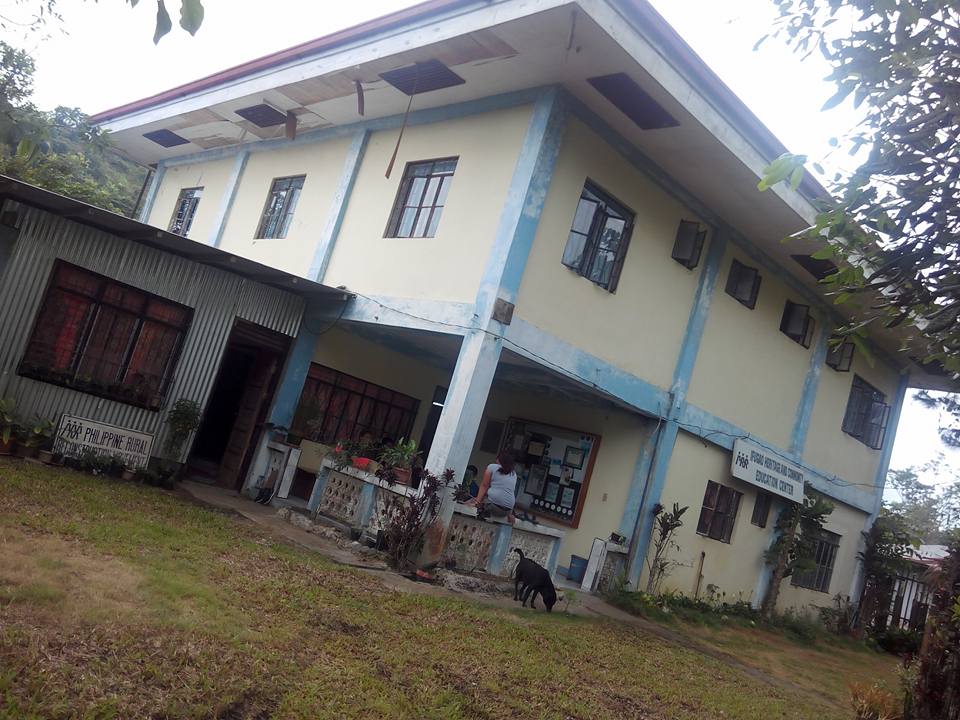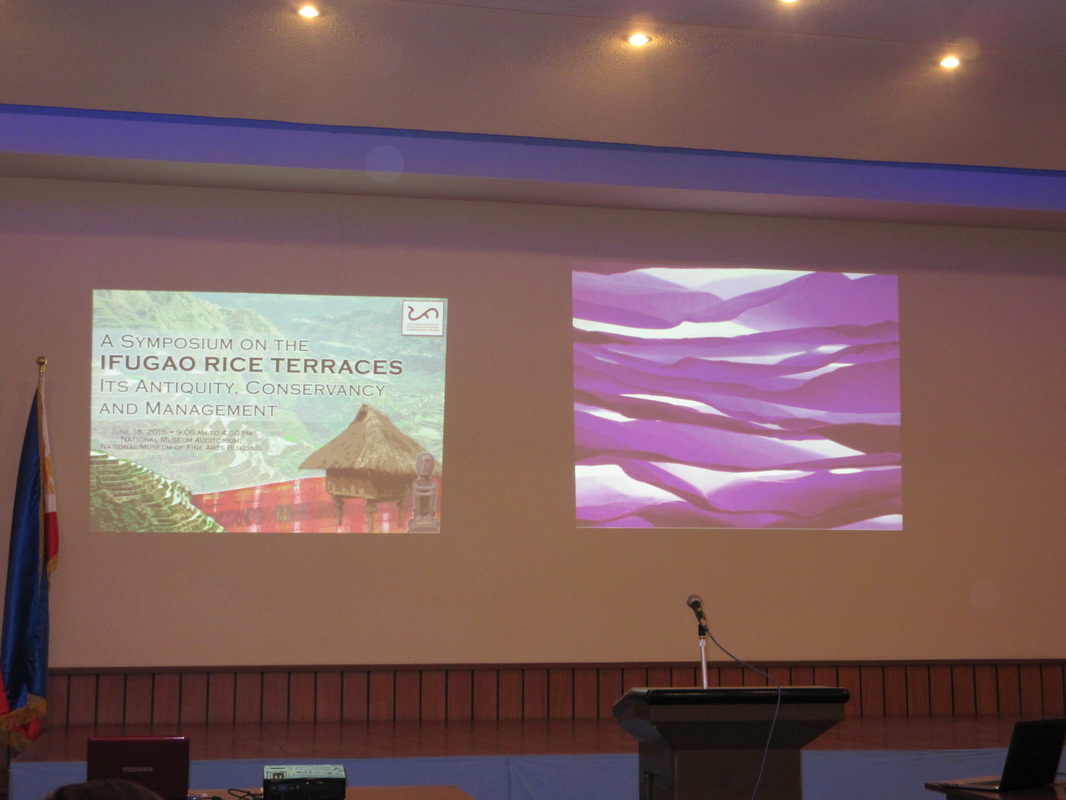IAP 2015 Blog Post
Megan Moran
Wednesday July 1, 2015
Could anything feel better in between toes than soft soil and squishy mud? Perhaps only the cool river water revealing there are indeed still feet at the ends of one’s legs at the end of a day out in the field. Or, maybe the feeling of a freshly sharpened trowel in one’s gardening-gloved hand, as one meditates upon precisely leveling one’s unit. I’ve picked up a peculiar sense of pride in the dirt scrapes off my trowel, clothes, hands, face, and feet after everyday of fieldwork with the Ifugao Archaeological Project excavating Old Kiyyangan Village.
A typical day here seems much longer and incredibly more rewarding than a lazy day relaxing at home. After breakfast. we load into and on top of the Jeepney with all of our gear and head out. The views of the landscape and people going about their morning routines on the ride to the field are always inspiring and refreshing. I’m impressed by how many creative poses archaeologists wiggle into to find the optimal pose to reach into a unit. Screening for artifacts I find myself reminiscing about searching vaguely through a bucket of LEGO bricks as a child to find the right pieces. While I excavate, screen, map, or take notes, I have been wondering what this community looked like leading up to its present state; what do this large rock pile and all these pottery and faunal remains around it have to tell us about life in Old Kiyyangan? The hikes back to the Jeepney at the end of a field day are just as perilous and as zen as the morning’s. At home, everyone processes the day and the data in many ways, often working late into the night.
In these first two weeks since arriving in Manila and joining this year’s crew for our orientation and The Symposium in the National Museum last Tuesday, I have come to know and admire each and every one of my crewmates and “The Hierarchy” (an absolutely necessary evil). We all live and work together in a new community and environment all of us have asked to journey and in which we were granted permission to operate. Always navigating new ethics and dictates of consciousness, we all find ourselves facing the same challenges. How does one go about rural towns in Northern Philippines as one of a group of young privileged Americans and foreign visitors widely suspicioned to be gold-diggers? Through many self-reflexive negotiations with well-intentioned action and a directed project, we continue to learn about this each day.
When turning into bed at night, thoroughly tired by the day’s efforts, I might find myself trying not to worry about the dirt lining my toenails and hoping that I remember to bring everything I need to the field the next morning. I look forward to many more productive and fortifying days!
Megan Moran
Wednesday July 1, 2015
Could anything feel better in between toes than soft soil and squishy mud? Perhaps only the cool river water revealing there are indeed still feet at the ends of one’s legs at the end of a day out in the field. Or, maybe the feeling of a freshly sharpened trowel in one’s gardening-gloved hand, as one meditates upon precisely leveling one’s unit. I’ve picked up a peculiar sense of pride in the dirt scrapes off my trowel, clothes, hands, face, and feet after everyday of fieldwork with the Ifugao Archaeological Project excavating Old Kiyyangan Village.
A typical day here seems much longer and incredibly more rewarding than a lazy day relaxing at home. After breakfast. we load into and on top of the Jeepney with all of our gear and head out. The views of the landscape and people going about their morning routines on the ride to the field are always inspiring and refreshing. I’m impressed by how many creative poses archaeologists wiggle into to find the optimal pose to reach into a unit. Screening for artifacts I find myself reminiscing about searching vaguely through a bucket of LEGO bricks as a child to find the right pieces. While I excavate, screen, map, or take notes, I have been wondering what this community looked like leading up to its present state; what do this large rock pile and all these pottery and faunal remains around it have to tell us about life in Old Kiyyangan? The hikes back to the Jeepney at the end of a field day are just as perilous and as zen as the morning’s. At home, everyone processes the day and the data in many ways, often working late into the night.
In these first two weeks since arriving in Manila and joining this year’s crew for our orientation and The Symposium in the National Museum last Tuesday, I have come to know and admire each and every one of my crewmates and “The Hierarchy” (an absolutely necessary evil). We all live and work together in a new community and environment all of us have asked to journey and in which we were granted permission to operate. Always navigating new ethics and dictates of consciousness, we all find ourselves facing the same challenges. How does one go about rural towns in Northern Philippines as one of a group of young privileged Americans and foreign visitors widely suspicioned to be gold-diggers? Through many self-reflexive negotiations with well-intentioned action and a directed project, we continue to learn about this each day.
When turning into bed at night, thoroughly tired by the day’s efforts, I might find myself trying not to worry about the dirt lining my toenails and hoping that I remember to bring everything I need to the field the next morning. I look forward to many more productive and fortifying days!




 RSS Feed
RSS Feed
